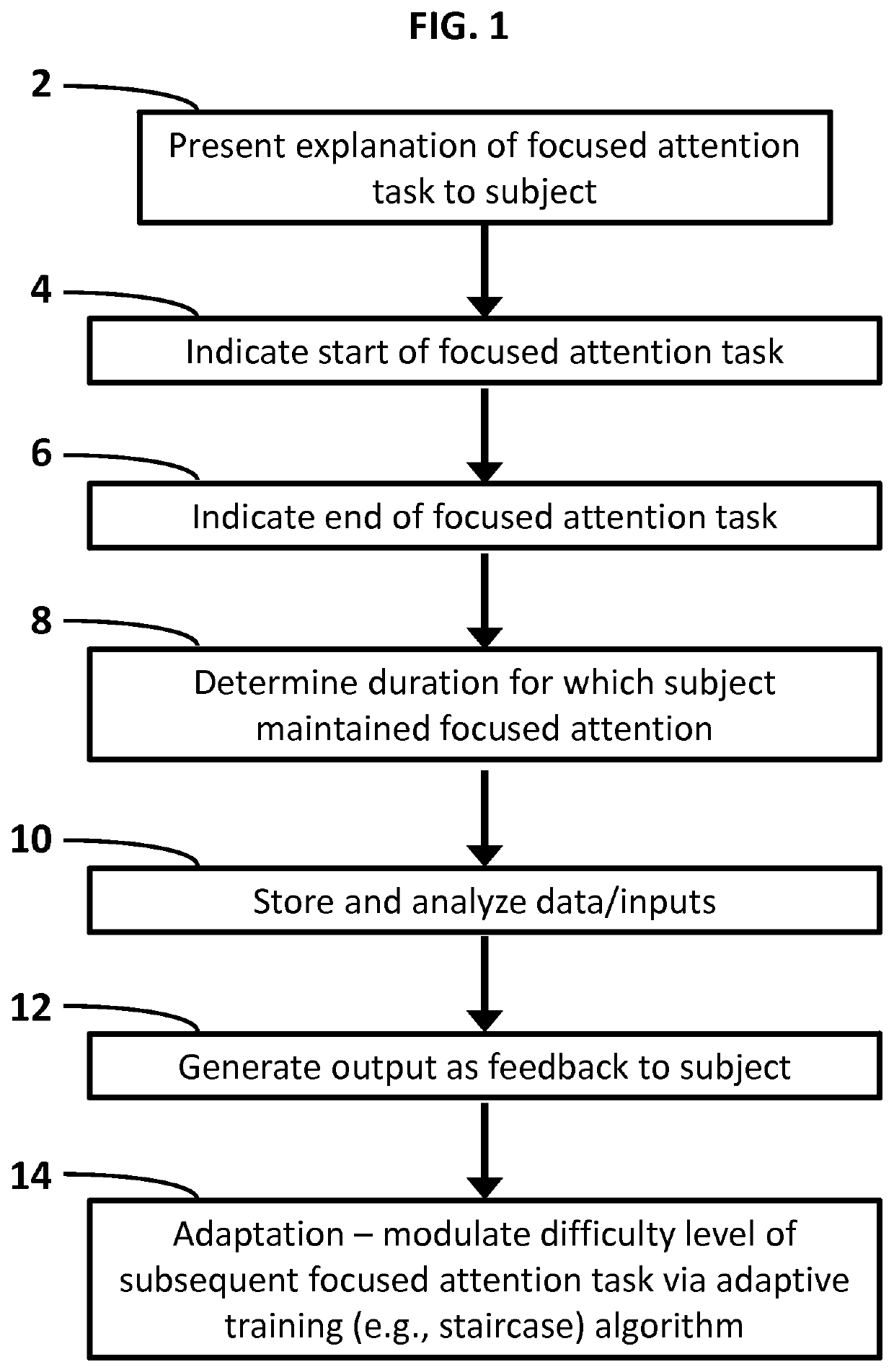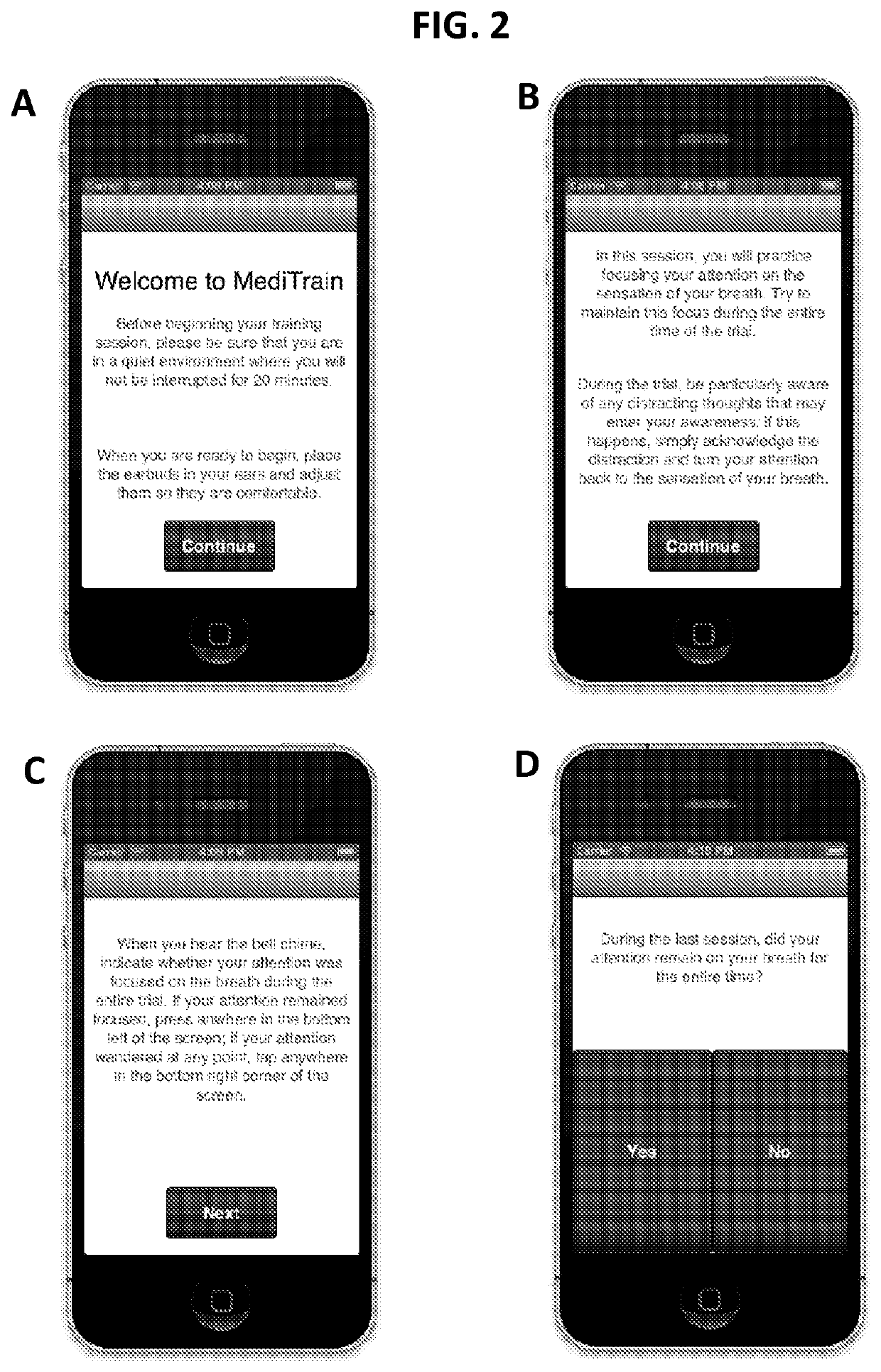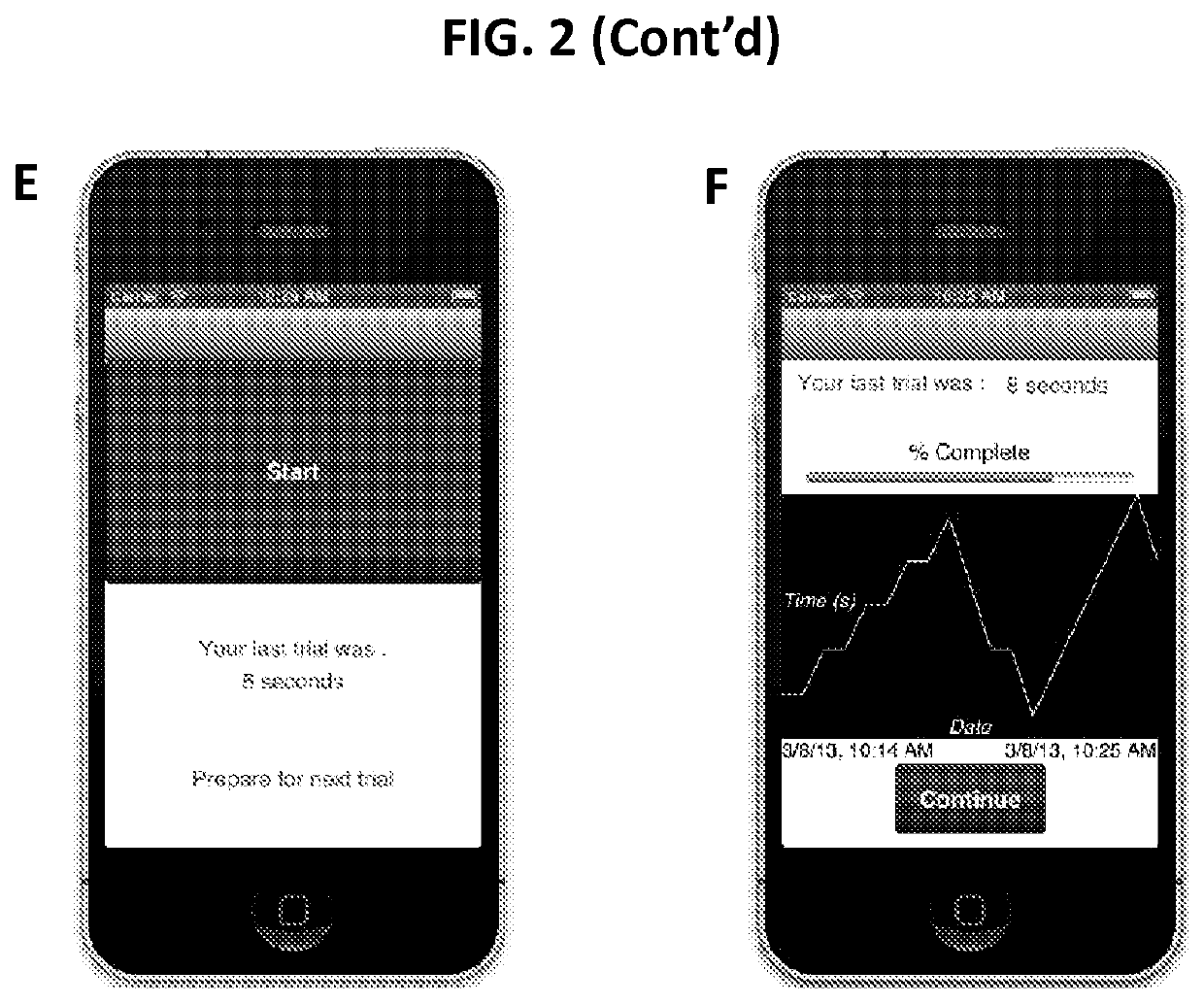Methods of enhancing performance on a cognitive task by improved self-regulation of internal distraction and computer readable medium and devices for practicing the same
a cognitive task and self-regulation technology, applied in the field of cognitive task performance enhancement by improving computer readable medium, can solve the problems of achieving high-level performance on a wide variety of activities, interference by both external and internal distraction, and interference from the external world, so as to improve the performance of the subject on the cognitive task, improve the self-regulation of internal distraction, and enhance the effect of subject's cognitive task performan
- Summary
- Abstract
- Description
- Claims
- Application Information
AI Technical Summary
Benefits of technology
Problems solved by technology
Method used
Image
Examples
example 1
Enhancement of Cognitive Task Performance by Presentation of Focused Attention Tasks
[0069]Experimental Design
[0070]Interference is typically considered from an external perspective, but can also manifest as internal distraction (e.g., ‘mind wandering’) that interferes with the task at hand. In this example, subjects were presented with a mobile computer-based meditation-inspired training program (MT) that relies upon focused-attention meditation practices such as directing attention to breath sensations and the awareness of mind wandering. After each trial, the subjects were asked to indicate whether their attention remained entirely focused on their breathing for the duration of the trial. Their trial length was adjusted accordingly, using an adaptive staircase algorithm to push the limits of their ability to focus without being distracted.
[0071]Methods
[0072]The MT program was designed as an integration of meditation-based practices and approaches from plasticity-based, cognitive-t...
example 2
Training Program for Enhancing Cognitive Task Performance by Improved Self-Regulation of Internal Distraction
[0077]Experimental Design
[0078]It is unknown whether susceptibility to internal and external distractions relies on overlapping cognitive processes or if self-regulation of internal distractibility is amenable to cognitive training. This example involves a mobile meditation-inspired training program (referred to in this example as “MediTrain”) that draws upon focused-attention meditation practices such as directing attention to breath sensations and the awareness of distractions. After each trial, participants are asked to indicate whether their attention remained entirely focused on their breath or if their mind wandered. The length of the next trial is adjusted accordingly, using an adaptive staircase algorithm to push the limits of their ability to focus without distraction.
[0079]Methods
[0080]This example involves a tablet computer-based, meditation-inspired cognitive trai...
PUM
 Login to View More
Login to View More Abstract
Description
Claims
Application Information
 Login to View More
Login to View More - R&D
- Intellectual Property
- Life Sciences
- Materials
- Tech Scout
- Unparalleled Data Quality
- Higher Quality Content
- 60% Fewer Hallucinations
Browse by: Latest US Patents, China's latest patents, Technical Efficacy Thesaurus, Application Domain, Technology Topic, Popular Technical Reports.
© 2025 PatSnap. All rights reserved.Legal|Privacy policy|Modern Slavery Act Transparency Statement|Sitemap|About US| Contact US: help@patsnap.com



